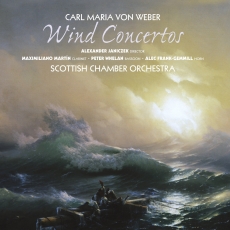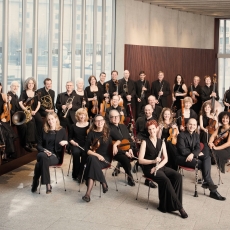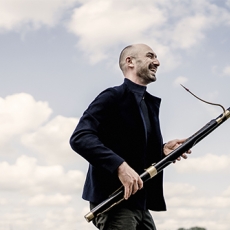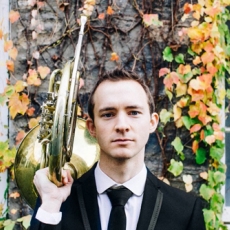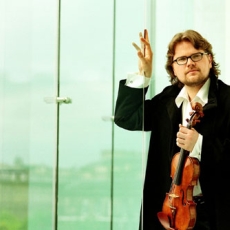SCO - Weber: Wind Concertos - Audiophile Audition
Alexander Janiczek and friends take a different tack, presenting us with an assortment of Weber's wind concertos, which necessitates axing the Clarinet Concerto No. 2. Retaining the Clarinet Concertino instead makes for an interesting counterpoint to the witty, more whimsical Horn Concertino.
While the Clarinet Concertino is in the standard three movements, it is anything but usual: the first movement is a brief introductory Adagio, and this is followed by series of variations that move from darkness to light-from quiescence to animation, from minor to major mode (the work ends in E-flat major) and so seem to make their own dramatic statement.
If Weber's early (1804) concerto-overture Beherrscher der Geister (Ruler of the Spirits) matches the fire and drama of the opening of his First Clarinet Concerto, the overture to Oberon is all fairy grace and lightness and has no analog among the concerti. Instead, in this context it suggests the breadth of Weber's imagination. No wonder Stravinsky called him a prince among composers.
The program has built-in contrast: Along with the serious and commanding Concerto No. 1 and Clarinet Concertino is the Bassoon Concerto of the same year-1811-when, following the great success of the first two works, Weber was inundated with commissions, most of which he was unable to fulfill. Unlike the clarinet works, this concerto is mostly light-hearted, treating the bassoon as basso buffo. It's probably as beloved by bassoonists as the other works are by clarinetists, though most listeners will place it a rung or two below the clarinet pieces.
Finally, the Horn Concertino: written in 1806, when Weber was a mere nineteen, it was revised (probably radically, but then the original manuscript has been lost) in 1815. In form, it recalls the Clarinet Concertino. It begins with a dark-hued, even mournful Adagio followed by a much more buoyant theme-and-variations movement. Following a brief recitative in which the solo horn plays some wild double-stops (you have to hear it to believe it), the finale is a bouncing Polacca that brings the work to a less heroic conclusion than Weber's other concertino. It seems to cover almost too much emotional terrain for one short work, but it's both an enjoyable and challenging work in its chromaticism and ahead-of-its-time special effects.
I find that the performances by hornist Frank-Gemmill and bassoonist Whelen are all they should be: dashing, comic when called for, virtuosic, especially the playing of Frank-Gemmill. They are supported in fine style by Janiczek and the excellent Scottish Chamber Orchestra. The musicality and virtuosity of Martín's performances are never in question; I just wish he'd been able to relax a bit more.
Linn's sound is very fine as well, if anything more grandly expansive, with imaging that reflects a bigger, deeper hall.
